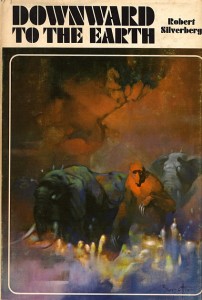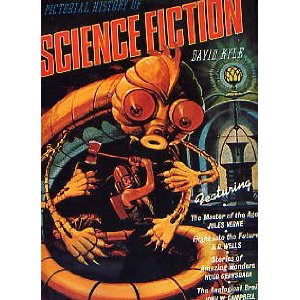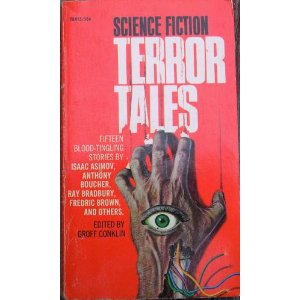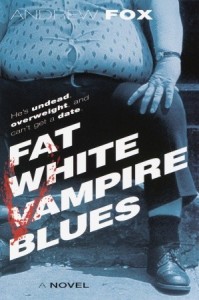I recently visited the Leesylvania State Park in Virginia for the first time. At the park’s eastern edge, I was granted vistas of the Potomac River like none I’d ever seen before. I had a sense of what has been called “the thrill of the new” – that wave of pleasure that can overtake you when you find yourself in the presence of something familiar enough to be comprehensible, yet alien enough to force you make you truly notice it, to struggle to find referents within your experience that help make sense of this new pattern or sensation. Our minds enjoy being worked. Not overwhelmed, but challenged.
I took a pair of snapshots that help illustrate, for me, at least, this “thrill of the new,” this invitation to see familiar forms arranged in strange, unexpected ways. The upper one, the tree on the river’s beach, looked like a piece of driftwood the Potomac had deposited on the sand, which had then magically elongated into a full-grown tree, growing where no tree should be able to take root. The lower photo is of several dozen gnats caught on a spider’s web. Due to the angle at which I approached the web, with the gray-white sky and the gray-blue river behind it, the web disappeared from view, leaving only its captive contents visible – dead insects that seemed to form a cartoon sketch of a one-eyed, dancing man.
As a species, we seem to be powerfully drawn to new sensations. Researchers have identified that one of the key differences between our direct ancestors, Homo sapiens sapiens, and other species of hominids, such as Homo neaderthalis, was our ancestors’ refusal to allow natural barriers to cut off their exploration and expansion. Our ancestors found ways to ford rivers, to cross oceans, and to scale walls of mountains. What drove them forward? Scientists speculate it was an insatiable desire for the new. Recent genetic research on the remains of our ancestors, both direct and indirect, indicate that members of Homo sapiens sapiens pursued sexual relations with any creature that even vaguely resembled them – not only Neanderthals, but other contemporaneous hominids, as well, such as Homo erectus and Homo habilis. There is even speculation that the emotion that drove the earliest seafarers to take the mind-bending risk of sailing their tiny craft beyond the sight of land was a hunger for the new, particularly new types of sexual partners. When they reached Australia from the shores of Asia, they must have been sorely disappointed… unless some experimented with kangaroos or koala bears.
Yet people also have a countervailing need for the comforts of familiarity, especially when they find themselves in new and possibly threatening environments. Social researchers and psychologists have investigated a possible connection between Americans’ high level of mobility (their proclivity for moving from state to state) and their love of chain stores. The upshot? As much as Americans may gain economic advantages and aesthetic pleasures from experiencing the sights and attractions of a new home town, this exposure to newness and the stress it causes makes them prone to seek out the comfort of the familiar, such as dinners from Applebee’s and stone-washed chinos from the Gap.
As both a novelist and a reader of novels, I am constantly in search of the thrill of the new (not necessarily kangaroo sex, mind you). For what is the original meaning of the word novel? I very rarely read any fantasy set in Tolkien-style secondary worlds, because I find much of it to be repetitive and overly derivative of earlier books. It bores me. It too often fails to surprise or delight. For many readers, however, this is a feature, not a bug; they prefer books which feel profoundly familiar and homey. The familiarity and predictability are comforting and reassuring, perhaps a welcome balance to other aspects of those readers’ daily lives, which may not be comforting or reassuring at all. I’m not immune to a desire for literary “comfort food;” I take mine in the form of comic books, which, if they are to be truly satisfying, must remind me at least somewhat of the comics I read in the 1970s, when they were a refuge for me from strife at home and at school. When it comes to comics, I like the sense of hanging out with old friends from childhood. But I tend to like my fantasy to be more challenging. The thrill of Gene Wolfe’s The Books of the New Sun, for example, was that he took so many very familiar elements – the epic quest, the magical sword, the commoner who might someday be king – and spun them into a multi-volume adventure of personal discovery unlike any the genre had seen before.
As a writer, supplying the thrill of the new can be like walking a tightrope, however – lean too far one way and you risk the boredom of over-familiarity, but lean too far the other and you may plunge yourself and your would-be readers into the chasm of a lack of referents, a dark whirlpool of unfamiliarity. In my twenties, I went through a period when I was mad for anything Beat. I read book after book by Jack Kerouac, John Clellon Holmes, Allen Ginsburg, and their legion of friends, plus scads of biographies and memoirs. After reading the early novels of William S. Burroughs, I picked up a copy of his Naked Lunch with great anticipation. Yet I wasn’t able to force myself to read more than forty pages. It was too alien. It lacked referents, handholds for me to grab hold of as I traversed its pages. Reading it quickly became a wearisome mental exercise of forcing streams of words through my head and struggling to make sense of them… not an activity conducive to the desired altered state of consciousness we call “losing oneself in a good book.”
Aside from the aforementioned Gene Wolfe, which writers have been the most successful at walking the tightrope and eliciting the thrill of the new for me? The two writers who have been the most consistent at performing that trick, over a great number of books and an equal number of years, stretching from my early teen days to my present middle age, have been J. G. Ballard and Robert Silverberg.

Ballard spent much of his childhood overwhelmed by the new — the life-threatening new experiences of the Japanese conquest of Shanghai and its European quarter, the crumbling of the Eurocentric society he’d grown up in, his family’s transfer to a prison camp at Lunghua, and the eventual Japanese military defeat. Upon his return to England after the war, he became fascinated by the Surrealist painters. He also embarked upon a course of reading medicine at a university; he never completed a medical degree, but he was forced to confront the human body from a vertigo-inducing new perspective, and the coldly precise, oftentimes merciless language of medical journals insinuated itself into much of his fiction.

His sold his earliest stories to science fiction magazines, most prominently to New Worlds, soon to be edited by Michael Moorcock. He dedicated himself to the exploration of “inner space” as opposed to “outer space,” stories that focused on the psychological impacts of bizarre alterations in human experiences of time and their physical environments. His first novel, The Wind from Nowhere (1961), written in less than a half a month, was a fairly conventional disaster novel about hurricane-force winds that envelop much of Earth and drive civilization to the brink of extinction. Its most significant impact was that its sale allowed Ballard to become a full-time writer.

His next three novels, The Drowned World (1962), The Burning World (1964; also known as The Drought), and The Crystal World (1966), were also disaster novels. But they were an entirely different sort of book than the hastily written and mundanely plotted The Wind from Nowhere. With these books, Ballard expanded his explorations of Freudian and Jungian psychology and the visual inversions of his short stories, inspired by the Surrealists, into long form. Rather than present heroes who struggle against the dislocations and social and personal breakdowns brought on by overwhelming, worldwide environmental disaster, Ballard painted protagonists who not only surrendered to the entropy flooding in all around them, but who welcomed it, because it fulfilled their deepest psychological needs and desires.
No prior science fiction disaster novels had been written from such a perspective. Ballard’s determined rejection of the “heroic, problem-solving engineer” protagonists of much American and British science fiction since the time of Hugo Gernsback’s Amazing Stories and John Campbell’s Astounding Science Fiction scandalized many writers and critics in the science fiction field. The scandalized included noted writer and reviewer Algis Budrys, who had this to say about Ballard’s disaster novels in the December, 1966 issue of Galaxy:
“A story by J. G. Ballard, as you know, calls for people who don’t think. One begins with characters who regard the physical universe as a mysterious and arbitrary place, and who would not dream of trying to understand its actual laws. Furthermore, in order to be the protagonist of a J.G. Ballard novel, or anything more than a very minor character therein, you must have cut yourself off from the entire body of scientific education. In this way, when the world disaster — be it wind or water — comes upon you, you are under absolutely no obligation to do anything about it but sit and worship it. Even more further, some force has acted to remove from the face of the world all people who might impose good sense or rational behavior on you, so that the disaster proceeds unchecked and unopposed except by the almost inevitable thumb-rule engineer type who for his individual comfort builds a huge pyramid (without huge footings) to resist high winds, or trains a herd of alligators and renegade divers to help him out in dealing with deep water.”
The passage of time and the impacts of his influence in the works of subsequent writers have rubbed the transgressive edge from Ballard’s early-career disaster novels. Unless a reader is pretty much a virgin to the SF field, he or she will be unable to experience The Drowned World with the same fresh eyes and sense of dislocation that a typical reader of 1962 would have, just as enthusiasts of classical music can no longer hear Stravinsky’s score for The Rite of Spring with the same ears as those employed by the audiences of 1913. However, thanks to Ballard’s extraordinary mastery of visual imagery, these three books still powerfully conjure a trio of bewilderingly changed Earths and manage to deliver on that treasured “thrill of the new.”
Perhaps a bit ironically, Ballard’s final four novels, Cocaine Nights (1996), Super-Cannes (2000), Millennium People (2003), and Kingdom Come (2006), were so similar to one another, thematically and stylistically, that I found myself enjoying them in sequence much the same way a voracious reader of Agatha Christie’s mysteries would her connected works — as familiar, comfortable fictive “pillows” on which to rest my weary head. Ah, yes: that typical Ballardian hero, so indecisive, so alienated from himself, his family, his lovers, and his environs, so easily influenced by anyone with a powerful agenda; that restless professional and middle class, searching hungrily for fresh transgressions to shock them out of their stifling ennui; that gorgeous, off-kilter evocation of high-crust suburbia… I’ve read it all before, but I’m happy to read it again and again! Still, a retreat to a comfortable rut on Ballard’s part in his late career in no way diminishes the impact of his early disaster novels or such iconic mid-career works as Crash. (Bonus: here’s a graphic artist’s examination of the effectiveness of the cover art and designs of Ballard’s many books.)

One novel from my teen years that never fails to reward me no matter how many times I reread it is Robert Silverberg’s Nightwings (1969), a fix-up of three novellas, “Nightwings,” “Perris Way,” and “To Jorslem,” all published (I believe) in Galaxy between 1968 and 1969. The thrill of the new provided by Silverberg’s novel is the sense of Earth’s human civilization as almost incalculably ancient, humanity having millennia ago achieved its apogee as a star-spanning race that conquered and enslaved multitudes of other sentient species, confining individuals from them in terrestrial zoos, but having since fallen back so far that the residents of Earth, no longer star travelers, now fear being conquered themselves by the descendants of those they had made zoo exhibits. Other books that I’ve read have also reached for this effect, some of them with a good measure of success (I’d list Brian Aldiss’s Hothouse as chief among these), but none have managed it with the poetic weightiness, the sense of the passing of hundreds and hundreds of centuries with their accumulation of dust and detritus, sorrow and regret, that Silverberg so masterfully achieves with just the first few pages of Nightwings. Perhaps the effect would be better described as “the thrill of the ancient” than “the thrill of the new,” but it was certainly new, thrillingly so, to me back in 1976, when I purchased my Avon reprint of the novel.

Experiencing the thrill of the new, just like experiencing the fabled “sense of wonder,” becomes more difficult as a reader grows older and acquires more and more notches on his or her reading belt. Techniques that were so fresh and startling, viewpoints that were initially so strange and wonderful may lose their glow with repeated exposure. Not too long ago, I set out to read Robert Silverberg’s novels of the 1960s and early 1970s that I had somehow missed. I was very curious how I would respond to these books at this point in my reading life. Would I enjoy them, but in that “cozy, comfortable old flannel shirt” sort of way in which I had enjoyed Ballard’s final novels? Or could I possibly respond to any of them in the same way I had responded to Nightwings as a young teenager?
Maybe nothing could captivate me now the way Nightwings affected me back in 1976. But I must say, Downward to the Earth (1970) came darned close. It is the story of a human ex-colonizer, Edmund Gunderson, who travels to revisit the planet where he had once served as colonial overseer to work crews of sentient elephant-like beings and sentient giant sloth-like beings. Since his last stay there, the planet has been returned to the sovereignty of its native life forms, so he arrives as a tourist, not a master. I found Gunderson’s journey of personal discovery among the nildoror and the sulidoror, his learning of the link between the two species, a link neither he nor any of the other colonists, save one, had ever suspected, and the natives’ eventual acceptance of him and provision for his needs to be extremely moving. Not merely moving, but exhilarating because of its freshness. Its intimations of William Conrad’s Heart of Darkness added to the wonder and strangeness, in part because Silverberg’s book ends in an entirely different emotional zone than Conrad’s classic novella does. “The horror! The horror!” is still present, but it becomes inverted by the end of Silverberg’s novel, and quite wonderfully so.
To have provided me, a jaded, middle-aged SF fan who has read hundreds of novels and stories, who has written eight novels of his own, with the thrill of the new — and to have done so with a forty-year-old book… I must tip my cap to you, Mr. Silverberg. Well played, sir! Well played!
And how marvelous to discover that I am still capable of reading with the eyes, ears, and imagination of a twelve-year-old.























